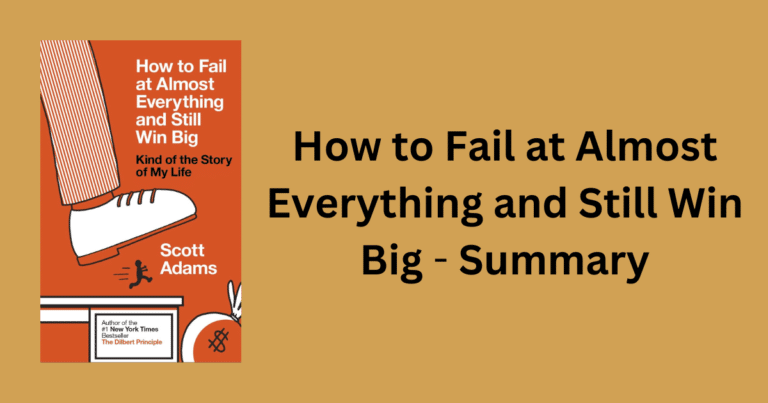The Million Dollar Man Jack Dempsey by Thomas Brennan chronicles the life of America’s Heavyweight Champion Jack Dempsey. Jack Dempsey was the don of the roaring 1920s.
The Early Years
Jack Dempsey was born to Hyrem and Cecilia Dempsey he was the 9th of 13 children they were a Mormon family. They were moving from West Virginia to Utah, looking for better opportunities, and settled in Manasa, Colorado.
His father Hyrem had trouble holding a regular job and was always moving the family from town to town looking for a get quick rich get scheme. He was known to use profanity and drink a lot.
His mother Cecilia did much of the heavy lifting and made ends meet for the family. They were dirt poor and didn’t have anything to eat.
When Cecilia gave birth to Jack Dempsey, she read a book about John L Sullivan, an American Boxer, and wanted her son to one day be The Heavyweight Champion of the world.
He was born William Harrison on June 24, 1895, in Manassa Colorado. They came to Montrose in 1908 and his mother opened a restaurant Rio Grande Eating House. Jack would leave school after the 8th grade and wanted to make it as a professional fighter.
Bernie was Jacks’ older brother by over 20 years and taught him about boxing fundamentals. He encouraged Jack to dip his hands in beef brine and apply them to his face to toughen his skin and chew pine gum, which he hated to toughen his jaw.
Dempsey’s early boxing career saw him fighting in the mining areas. He would frequent the bars and saloons and fight just about anyone so that he could eat.
He did odd jobs to support himself: he worked as a miner, picked peaches, washed dishes, skinned mules, and worked construction.
He lived as a hobo. He didn’t have enough money to buy a train ticket so he would get underneath the rails of a train and hold on to it. It’s an extremely dangerous thing to do and one slip could have ended it right there.
Jack Dempsey would compile a decent record of 20 wins and headed to New York in 1916 for better opportunities. The People in New York didn’t care about Jack’s previous exploits in the ring and he had to start over.
Jack would change his fighter name from Kid Blackie to Jack Dempsey upon his brother Bernie’s insistence.
Dempsey Vs Willard
Dempsey Stalked his opponents much the same way a tiger stalks his prey. Dempsey was sensitive of his scrawny physique and devised a new boxing tactic: bobbing and weaving while crouching.
Dempsey was not treated well in New York, no one had heard of him and he dealt with many defeats in the ring because his manager John Reisler pitted him against opponents who were way stronger than him.
Dempsey would lose his passion for boxing because of the unscrupulous characters the sport attracted and also thought of quitting. He would split with his manager shortly.
Damon Runyon, the famed sportswriter, gave Jack the nickname of The Manassa Mauler, which would stick with him for the rest of his career.
Dempsey met Jack Doc Kearns, and the two struck a friendship immediately and Kearns would go on to manage Dempsey and play an important role in his Boxing Career.
Jack Kearns had great promotional skills and understood human nature well. He was able to move Dempsey up the ranks in a relatively short period of time.
Dempsey would rack some notable wins against worthy heavyweight contenders and would get to face Jess Willard for the heavyweight title in Toledo Ohio on 4 Jul 1919.
Jess Willard had just killed an opponent 6 years earlier. Willard was disgusted at Dempsey’s manager, requesting him to challenge him, and didn’t think Dempsey stood a chance.
The fight between Dempsey and Willard was the most savage one-sided beating in boxing history. The crowd laughed at first on seeing Dempsey. He stood at 6 feet and weighed 180 pounds. Jess Willard was 6 feet 7 inches and weighed 235 pounds. It was like watching David and Goliath.
Right from the get-go Dempsey would stalk and pummel Willard with hard shots to the body and head. He would knock Willard down 7 times in the first round.
The Punishment would continue for the next 2 rounds and Willard would quit on his stool at the beginning of the 4th round. Jack Dempsey would become the youngest heavyweight champion at 24. He went from homeless to heavyweight champion and realized his dream.
The fight would not have gone past the first round in today’s rules. Dempsey was a savage in the ring and took the boxing world by storm.
The American public had never seen a man throw punches with such vicious intent and have such a disregard for his opponent. Dempsey put excitement first and safety last and captivated the publics’ hearts.
Dempsey Vs Georges Carpentier
Carpentier was a French war hero. The Draft Dodging stories of Jack Dempsey would plague his boxing career. He was called a slacker and faced severe criticism from the American Public.
Jack Kearns had an idea to clean Dempsey’s image and had him appear in a working site with a sledgehammer and working clothes. The problem was his patent leather shoes were showing underneath his pants. It made for very bad press for Jack.
Dempsey’s fight with Carpentier was the first to be broadcast over National Radio. Carpentier was much smaller than Dempsey and was previously a light heavyweight. This was the first fight that had a million-dollar gate, and Dempsey was a pivotal part of it.
Dempsey Vs Carpentier would take place on 2 Jul 1921 in New Jersey. The Fight was Dubbed Fight of the Century. Dempsey’s entrance to the ring was greeted with loud boo’s and hisses from the crowd while they gave Carpentier a Hero’s welcome.
Once the fight took place, it soon became clear that Carpentier didn’t stand a chance after 2 rounds. Dempsey would stalk and punish him with a brutal onslaught in round 4, dropping him twice and ending the bout.
Gene Tunney Future Heavyweight champion watched the fight from the stands and learned a valuable lesson from the fight that Dempsey was open to a simple right cross. He fought against Soldier Jones in the undercard.
Dempsey after the victory would win back the crowd to his side, and the draft dodging stories would be silenced for now.
Dempsey Vs Luis Firpo
Dempsey’s next high-profile bout came against Argentinian Luis Firpo. Firpo stood 6 feet 3 inches and weighed 225 pounds and was hailed as the wild bull of the pampas. Dempsey got the public excited about boxing again.
Jack Kearns wanted to provide the fans a boxing spectacle One for the ages if you will. He didn’t want another one-sided Beatdown from Dempsey.
Firpo had a terrific right hand but lacked defensive skills. He had a similar style to Dempsey and was an all out slugger.
The Fight took place on 14 Sep 1923 in New York City. It was one of the most exciting heavyweight bouts of all time and a controversial one as well.
It was similar to Hagler Vs Hearns was exciting while it lasted, but was over too quick. Dempsey and Firpo traded fire with fire, leading to 7 knockdowns in the 1st round with Dempsey being shoved out of the ring onto the spectators. The fans helped him back into the ring.
Dempsey had quick recuperative powers and knocked Firpo down twice with a barrage of punches and ended it in the 2nd round. It was his 6th title defense and the 2nd Million-Dollar gate in Boxing.
The Neutral Corner rule was adopted after the Dempsey-Firpo fight. A Major change that would play a crucial Factor in Dempseys Future.
Dempsey Vs Tunney 1
Dempsey would take a big break from boxing after the Firpo fight. The fast life outside was getting to him. He didn’t feel that burning desire to fight anymore. He now had enough money to travel from inside the train rather than from underneath.
Like the late great Marvin Hagler said It’s tough to get out of bed to do roadwork at 5 am when you’ve been sleeping in silk pajamas. Dempsey’s fire was dying while Gene Tunney’s was blazing.
Dempsey was heading down while Gene Tunney was coming up. Dempsey tried transitioning to Hollywood and did broadway. Boxing was now not his first priority.
Gene Tunney had done his homework on Jack Dempsey and after spending hours of studying his film knew the ins and outs of his game. Tunney had a superior boxing ability and could counterpunch beautifully. He had a scientific approach to the game of the sweet science.
Tunney appeared like a college professor rather than a fighter. Tunney and Dempsey were polar opposites. The Fight against Tunney would take place after a 3-year layoff in Philadelphia Pennsylvania in Sesquicentennial Stadium on 23 September 1926.
It was clearly evident from the early rounds that Dempsey didn’t have the speed to catch Tunney. Anytime Dempsey would advance with the Dempsey Roll Tunney would either smartly sidestep, backpedal or clinch from Dempsey’s assault.
Dempsey had no chance in the fight and lost a clear, unanimous decision on all scorecards. It was also the first time the heavyweight belt changed hands via a decision.
Dempsey, after the fight, was disgusted with his effort and wanted to reclaim his throne. He was now concerned about his health and didn’t have the fire that he once did. This was the 3rd fight with the Million-Dollar Gate.
Dempsey didn’t lose his stock even after losing the fight and wanted a return bout to avenge his loss. Dempsey knew he needed a tune up fight to get his rhythm back and was slated to fight Jack Sharkey in Yankee Stadium, New York the following year after some much-needed rigorous training.
Jack Dempsey knew Sharkey was a formidable opponent, and an easy knockout was not on the cards. His strategy was to tire sharkey with hard body blows and get the KO in the later rounds.
Dempsey would face Sharkey on July 21, 1927, in Yankee Stadium to a capacity crowd. Dempsey followed his strategy effectively and mixed in some low blows as well for good measure.
Sharkey complained to the referee in the 7th that Dempsey was hitting below the belt Dempsey saw an opening and dropped Sharkey for the Knockout. Sharkey ignored the advice Protect yourself at all times which led to knockout.
The Public wasn’t too pleased with Jack Dempsey’s performance and didn’t think he had much going for him against Sharkey. The People weren’t totally on board that Dempsey could regain his title against Tunney.
The Sharkey-Dempsey fight was the 4th Million-dollar gate and the 1st million-dollar gate for a non-title bout.
Dempsey Vs Tunney 2
The Second fight against Tunney would take place in Soldier Field Chicago on 22 Sep 1927. Tunney didn’t want to trade with Dempsey in the middle of the ring. He knew his strengths and wasn’t interested to slug it out with Dempsey.
Referee Dave Barry explained the rules of the contest and in case of a knockdown, the man who caused the knockdown must go to the farthest neutral corner.
The Fight got underway, and the people were behind Dempsey, urging him to get his crown back. Tunney didn’t get the same adulation even though being the champion.
The Fight seemed to be a repeat of the first bout. Dempsey kept rushing in to mount some offense, while Tunney just evaded and counterpunched. It seemed like a clear path to victory for Tunney once again he didn’t seem to be in no trouble.
Dempsey drove Jack to the ropes in the 7th and landed a huge leaping left hook, followed by a combination to drop Tunney for the first time in his career.
The referee didn’t begin the count for 4-5 seconds because Dempsey didn’t go to his neutral corner. Tunney popped back up at the count of 9 and got on his bike and recovered well.
Tunney would drop Dempsey in the 8th and ride another unanimous decision victory against Dempsey. The 7th round was the only round out of the 20 rounds fought between the two that Dempsey won and he rightfully retired after his 2nd loss to Tunney. Tunney would also retire after defending his belt against New Zealander Tom Heeney.
The Final Years
Dempsey would open his restaurant in 1935 in Madison Square Garden, New York, which was a huge success until it went out of business in 1974.
Dempsey served as a coast guard in world war 2. Dempsey’s health took a turn for the worse in the 70s and after suffering several strokes. On May 31, 1983 Jack Dempsey passed away due to natural causes.
Dempsey was a beast in the ring, and a thorough gentleman outside the ring. He was revered by the American public and was a once in a lifetime athlete and will never be forgotten.
“I can’t sing and I can’t dance, but I can lick any SOB in the house.”
Jack Dempsey
About Thomas Brennan
It’s hard to cover Jack Dempsey’s life in a blog post, but Thomas Brennan does a good job with The Million Dollar Man Jack Dempsey. Thomas Brennan enjoys reading and writing about important historical milestones. He is the author of 1964: Year of Triumph and I Was a Limbo Dancer for the FBI. You can find his books on Amazon.






